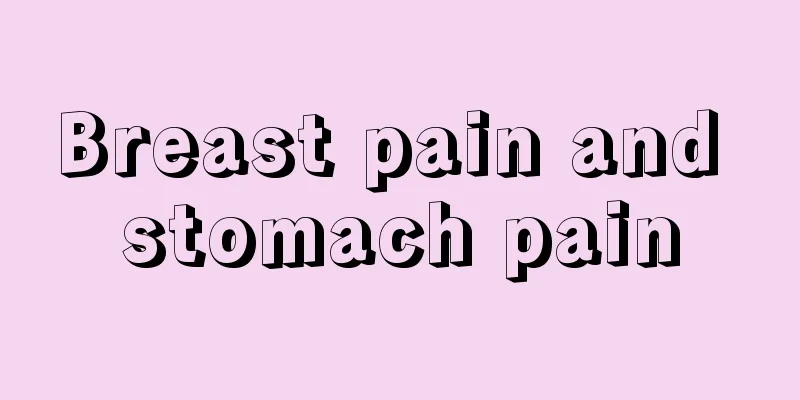Breast pain and stomach pain

|
Breast tenderness is a female health problem that many people have. There are many reasons that cause this pain, such as physiological pain, breast pain during adolescence, breast pain during menstruation, breast pain during pregnancy, or breast pain after miscarriage. Different treatment methods are needed for breast pain at different stages. Below, we will introduce you to the relevant knowledge about breast pain in detail! 1. Physiological pain It is the main cause of breast pain in women, so don't worry too much. Physiological breast pain is often related to menstruation, and breast tenderness about a week before menstruation is considered normal. 2. Breast pain during puberty The breasts of girls aged 9 to 13 begin to develop, and dome-shaped lumps the size of peas or beans appear in the breast tissue under the nipples, which are slightly swollen and painful. After menarche, it will disappear on its own as the breasts mature during puberty. 3. Breast pain during menstruation It is the most common type of breast pain, accounting for about 65% of all breast pain, with an average age of onset of 35 years. The pain usually occurs or worsens 3 to 7 days before menstruation and gradually disappears or eases after menstruation. The severity of the pain varies from month to month, and is often felt as a heaviness, distension, dull pain, or occasional brief tingling sensation. There are also tender breast nodules, which are aggravated by pressure, movement or lifting objects. 4. Breast pain during pregnancy Some expectant mothers experience breast pain around 40 days after pregnancy due to the placenta and villi secreting large amounts of estrogen and progesterone, which causes breast enlargement. In severe cases, the pain may last throughout the pregnancy and usually does not require treatment. 5. Postpartum breast pain Breast fullness, hardness and pain often occur 3 to 7 days after delivery. This is mainly due to the effects of prolactin, venous filling, interstitial edema and milk filling. Therefore, mothers should breastfeed as early as possible. If there is a lump, you can apply hot compress and massage the lump before breastfeeding, or you can use a breast pump to extract milk to promote the patency of the mammary ducts. 6. Breast pain after artificial abortion Some women experience breast tenderness and a lump after a miscarriage. This is because the pregnancy is suddenly interrupted, which causes the hormone levels in the body to drop sharply, causing the newly developed mammary glands to suddenly stop growing, resulting in breast lumps and breast pain. |
<<: Is the first day of vaginal discharge the ovulation period?
>>: What causes late ovulation?
Recommend
Picture of fetus kicking belly
Being a mother is not easy. You have to endure a ...
Is pelvic floor muscle repair necessary for cesarean section?
Whether choosing a caesarean section or a natural...
What causes redness and itchiness on the inside of the labia minora?
The inside of the labia minora is the vagina. The...
How to use hair removal cream
Summer is here, it is a season that embodies beau...
How much blood does a woman bleed for the first time
Women need to have sexual life after they mature,...
What are the symptoms of an extra-work pregnancy?
Ectopic pregnancy is a pregnancy outcome that eve...
What does vaginal discharge look like during early pregnancy?
The bodies of women during pregnancy are very sen...
Hot belly during early pregnancy
Pregnant women will experience many uncomfortable...
What should I do if my girlfriend always loses her temper?
When two people are in love, women are always a l...
How is pregnancy caused by intrauterine adhesions?
The human body is very fragile, especially women....
What fruits are good to eat after hemorrhoid surgery? The doctor said so
Hemorrhoids are one of the most common diseases i...
Is it normal to have menstruation during two months of breastfeeding?
After ten months of hard pregnancy, mothers final...
What is the difference between fresh milk and pure milk? How many hours can milk be kept at room temperature?
Pure milk is rich in minerals, such as calcium, p...
What should I do if my vulva is itchy and has small lumps?
When there is a foreign object in the vagina, it ...
What is the reason for delayed menstruation?
The so-called menstrual period actually refers to...









